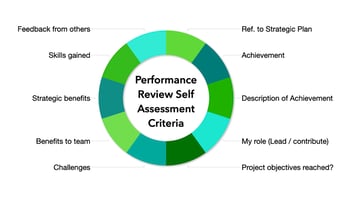Being in a performance review with your boss is one thing. But what if you are the boss? How can...
Annual Performance Reviews - 3 critical areas of performance not to miss
Some days your performance review feels about as welcome as a root canal. A Gallup study carried out in 2022 found that only one in five employees agreed that their organisation’s performance review practices motivated them to perform better. So what are we doing here? Why do organisations do this?
Performance review processes review each employee’s performance relative to others for the purpose of agreeing bonuses, salary increases and promotions. However at an organisational level they also help to identify teams that need more support to resolve performance issues. They are a massive data gathering exercise, that de-personalises each interaction to see the strengths and weaknesses of the whole. At an individual level they can feel very bureaucratic, impersonal and formal. So we don’t like them and the feedback we get is often months old, which means it’s can be quite ineffective.
Having said all that, performance reviews are an opportunity to talk with your boss about stepping up your salary. So what can be done on an individual level to take best advantage of this one to one meeting with your boss?
Prepare
The depth of your preparation will affect confidence in the meeting. It also shows respect for your boss and their time. Ultimately you should aim to optimise this conversation and get to the key points promptly.
- Self-assessment: Start by reflecting upon your own performance. Pay attention to your achievements, but also note the areas where you can improve - have some pre-prepared thoughts about how that improvement will occur, so you can proactively outline those to your boss.
- Gather evidence: collect relevant performance data on your achievements. Examples of outcomes or delivery of items that were agreed targets at your previous performance reviews is really important.
3 Focus areas not to miss
As you prepare your materials, your boss will be particularly interested to hear about how you;
i) increased organisational revenue,
ii) decreased (or controlled) organisational costs, and,
iii) improved the customer journey (increased likelihood of future sales)
Increased revenue and decreased costs are all about profitability. In almost all situations organisations want to be able to make more money than they spend, so they are profitable. If you work in a not-for-profit organisation, it can be helpful to think about profitability in terms of a budget surplus instead. The customer journey / satisfaction is about establishing the foundations now to increase the likelihood of future revenue.
Talking about performance
Your performance is more than WHAT you did. It is also HOW you did it, and what the CONSEQUENCE of that is for one (possibly more) of the 3 focus areas.
- Owning WHAT you did
It can feel a little uncomfortable talking about your performance. Particularly for women, it feels very “me, me, me”, like we are bragging. But here is what I know from years and years of giving performance reviews - you have to own your behaviour and your performance. What I mean by that is that the purpose of your performance is to talk about YOU and YOUR performance. That doesn’t mean you abandon all recognition of anyone else who may have supported you to achieve those targets, but use language that is accurate and own what you did. For example:
“I led the delivery of Project Awesome.”
Right up front is an ownership statement, don’t be squeamish about it - own it.
- Adding the HOW you did it
The next thing to say about Project Awesome is HOW you did it. This is your opportunity to highlight the foundational tasks you personally carried out while also acknowledging a wider team (assuming that is relevant) and to add the outcome. For example:
“My team supported me to deliver X, Y and Z. However, I initiated the project and established the governance framework, chaired and coached the project control group resulting in delivering the project 2 weeks earlier than forecast, and to the project budget.”
- Finish with the CONSEQUENCE
What is important to add to examples like the one above, is how it connects with the three focus areas. You do this just to make it really clear to your boss that your performance (in this case delivering Project Awesome) has a strategic purpose. For example;
“Project Awesome set out to automate time-consuming business processes and in doing so decrease organisational costs. By delivering on that project objective early, I have not only achieved project objective of cost reduction, but we have saved more in this current financial year.”
Confidently talking through your performance sets the scene and primes your boss for a discussion about your salary. I'll walk you through a few tips for when the talk turns to money in a future article.





Got a question? Get in contact here